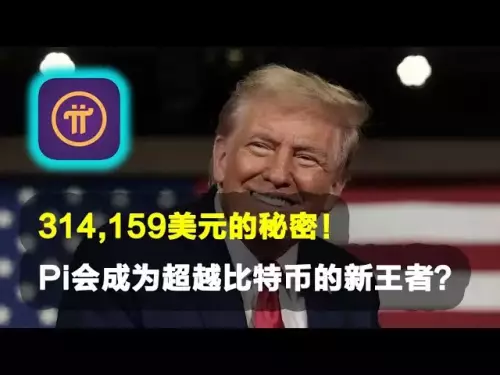-
 bitcoin
bitcoin $109667.069529 USD
-3.03% -
 ethereum
ethereum $3936.685804 USD
-4.07% -
 tether
tether $1.000493 USD
0.01% -
 xrp
xrp $2.771823 USD
-4.74% -
 bnb
bnb $957.805027 USD
-5.34% -
 solana
solana $196.735100 USD
-6.68% -
 usd-coin
usd-coin $0.999727 USD
-0.01% -
 dogecoin
dogecoin $0.227355 USD
-5.12% -
 tron
tron $0.335205 USD
-0.81% -
 cardano
cardano $0.779256 USD
-3.59% -
 ethena-usde
ethena-usde $0.999900 USD
-0.06% -
 hyperliquid
hyperliquid $42.492095 USD
-6.61% -
 chainlink
chainlink $20.501853 USD
-4.34% -
 avalanche
avalanche $28.952606 USD
-11.21% -
 stellar
stellar $0.356038 USD
-3.93%
Does Binance Futures support grid trading? How to set parameters?
Binance Futures supports grid trading, allowing automated buying and selling within set price ranges to profit from market volatility.
Apr 27, 2025 at 05:42 pm
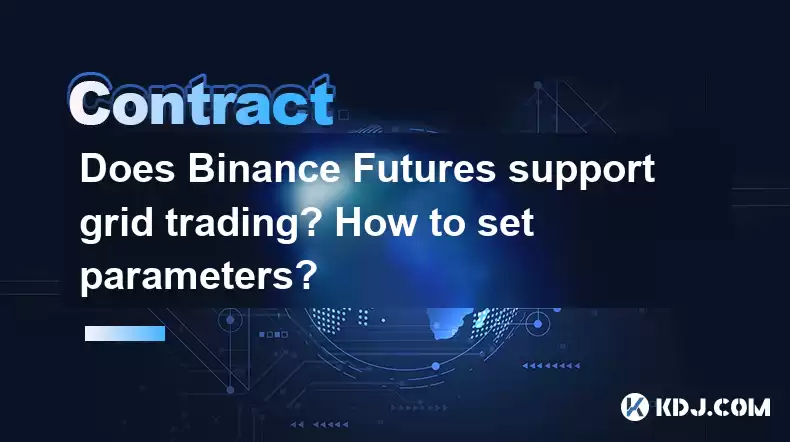
Does Binance Futures Support Grid Trading? How to Set Parameters?
Binance Futures is a popular platform among cryptocurrency traders for its extensive range of trading options, including futures contracts. One of the advanced trading strategies available on Binance Futures is grid trading. Grid trading is a strategy that involves setting up a series of buy and sell orders at predetermined price levels within a specific range, allowing traders to profit from market volatility without having to predict the market direction.
What is Grid Trading on Binance Futures?
Grid trading on Binance Futures allows traders to automate their trading strategy within a specified price range. This method is particularly useful for traders who want to take advantage of market fluctuations without constantly monitoring the market. By setting up a grid of buy and sell orders, traders can potentially profit from small price movements in either direction.
To start grid trading on Binance Futures, you need to have a Binance account with the Futures trading enabled. Once you have access to the Futures trading section, you can navigate to the grid trading feature.
How to Set Up Grid Trading on Binance Futures
Setting up grid trading on Binance Futures involves several steps. Here's a detailed guide on how to do it:
- Navigate to the Futures Trading Section: Log into your Binance account and go to the Futures trading section.
- Select the Trading Pair: Choose the futures trading pair you want to trade. For example, BTC/USDT.
- Access Grid Trading: Click on the 'Grid Trading' tab within the Futures trading interface.
- Configure Grid Parameters: You will need to set several parameters to create your grid. These include:
- Upper Limit: The highest price at which you want to set your grid.
- Lower Limit: The lowest price at which you want to set your grid.
- Grid Number: The number of buy and sell orders you want to place within the grid.
- Investment Amount: The total amount of capital you want to allocate to the grid.
- Profit Ratio: The percentage of profit you aim to achieve on each trade within the grid.
- Review and Confirm: After setting the parameters, review your grid setup to ensure everything is correct. Once satisfied, confirm the setup to activate the grid trading strategy.
Understanding Grid Trading Parameters
Understanding the parameters of grid trading is crucial for setting up an effective strategy. Here's a breakdown of each parameter:
- Upper Limit: This is the highest price within your grid. When the market price reaches this level, the grid will stop placing new buy orders.
- Lower Limit: This is the lowest price within your grid. When the market price reaches this level, the grid will stop placing new sell orders.
- Grid Number: This determines how many buy and sell orders will be placed within the grid. A higher number of grids means more frequent trading but also higher transaction fees.
- Investment Amount: This is the total amount of capital you are willing to allocate to the grid. It's important to set this amount according to your risk tolerance.
- Profit Ratio: This is the percentage of profit you aim to achieve on each trade within the grid. A higher profit ratio means you will hold onto your positions longer, waiting for larger price movements.
Adjusting Grid Trading Parameters
Once your grid is set up, you may need to adjust the parameters based on market conditions. Here's how you can do it:
- Monitor the Market: Keep an eye on the market to see how your grid is performing. If the market is moving in a way that your grid is not capturing, you may need to adjust your parameters.
- Adjust Upper and Lower Limits: If the market is trending strongly in one direction, you may need to adjust your upper and lower limits to capture more of the movement.
- Change Grid Number: If you find that your grid is too dense or too sparse, you can change the number of grids to better suit the current market volatility.
- Modify Investment Amount: If you want to increase or decrease your exposure to the market, you can adjust the investment amount accordingly.
- Tweak Profit Ratio: If you find that your trades are not hitting your profit targets, you may need to adjust the profit ratio to better align with market conditions.
Managing Risks in Grid Trading
Grid trading, like any trading strategy, comes with risks. Here are some tips for managing those risks:
- Set Stop-Loss Orders: Always set stop-loss orders to limit potential losses. This can help protect your capital if the market moves against your grid.
- Diversify Your Grids: Don't put all your capital into one grid. Consider setting up multiple grids across different trading pairs to spread your risk.
- Monitor Market Volatility: Grid trading works best in markets with moderate volatility. If the market becomes too volatile, your grid may not be able to keep up, leading to potential losses.
- Regularly Review and Adjust: Regularly review your grid's performance and adjust the parameters as needed. This can help you stay aligned with changing market conditions.
Frequently Asked Questions
Q: Can I use grid trading on all futures trading pairs on Binance?A: Grid trading is available on most futures trading pairs on Binance, but it's always a good idea to check the specific pair you're interested in to ensure it supports grid trading.
Q: Is there a minimum investment amount required for grid trading on Binance Futures?A: Yes, there is a minimum investment amount required, which can vary depending on the trading pair. You can find the specific minimum amount in the grid trading setup section.
Q: Can I manually intervene in a grid trading strategy once it's set up?A: Yes, you can manually intervene by adjusting the grid parameters or closing the grid entirely. However, be aware that frequent manual adjustments can defeat the purpose of automating your trading strategy.
Q: How does Binance charge fees for grid trading on Futures?A: Binance charges trading fees for each buy and sell order executed within the grid. The fee structure is the same as for regular futures trading, and you can find the specific rates in the Binance fee schedule.
Disclaimer:info@kdj.com
The information provided is not trading advice. kdj.com does not assume any responsibility for any investments made based on the information provided in this article. Cryptocurrencies are highly volatile and it is highly recommended that you invest with caution after thorough research!
If you believe that the content used on this website infringes your copyright, please contact us immediately (info@kdj.com) and we will delete it promptly.
- Big Rocking Horse, Coin, and Ice Cream: An Aussie Icon's Sweet Ride
- 2025-09-26 10:45:16
- Pi Network, Price Forecast, and the Meme Market: A New York Minute
- 2025-09-26 10:25:14
- AIXA Miner: Revolutionizing Bitcoin Mining with Cloud Solutions
- 2025-09-26 10:45:16
- Mid-Cap Altcoins: Crypto Buys with Breakout Potential
- 2025-09-26 10:50:01
- BullZilla Presale: Riding the Crypto Wave in September 2025
- 2025-09-26 10:50:01
- Litecoin ETF Buzz, XRP Breakout Dreams, and BlockDAG's Deployment: Crypto's Wild West in '25
- 2025-09-26 10:50:01
Related knowledge

How do I enable the "scalping-only" mode for Cardano (ADA) contracts?
Sep 24,2025 at 03:19am
Understanding Scalping Strategies in Crypto Derivatives1. Scalping in cryptocurrency trading refers to executing multiple short-term trades within min...
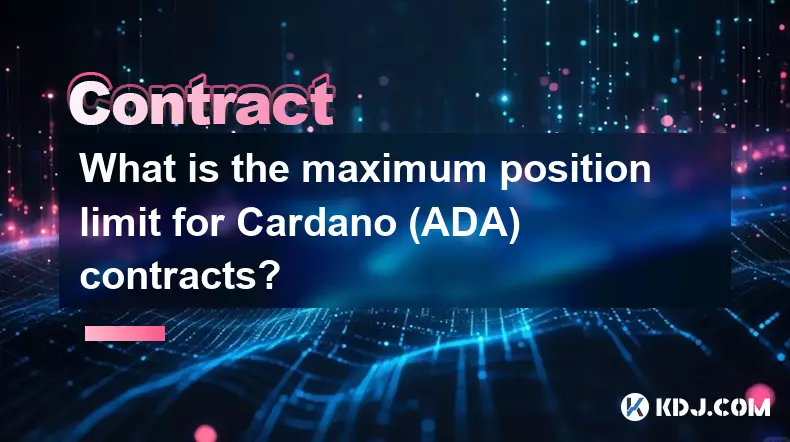
What is the maximum position limit for Cardano (ADA) contracts?
Sep 23,2025 at 11:00pm
Understanding ADA Futures and Derivatives Market Structure1. Cardano (ADA) futures contracts are offered by several major cryptocurrency derivatives e...
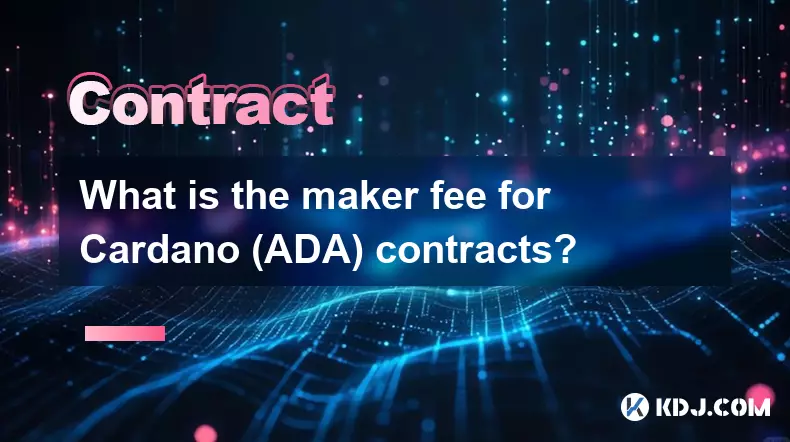
What is the maker fee for Cardano (ADA) contracts?
Sep 26,2025 at 09:01am
Understanding Maker Fees in Cardano (ADA) Contracts1. The concept of maker fees applies broadly across decentralized exchanges and smart contract plat...
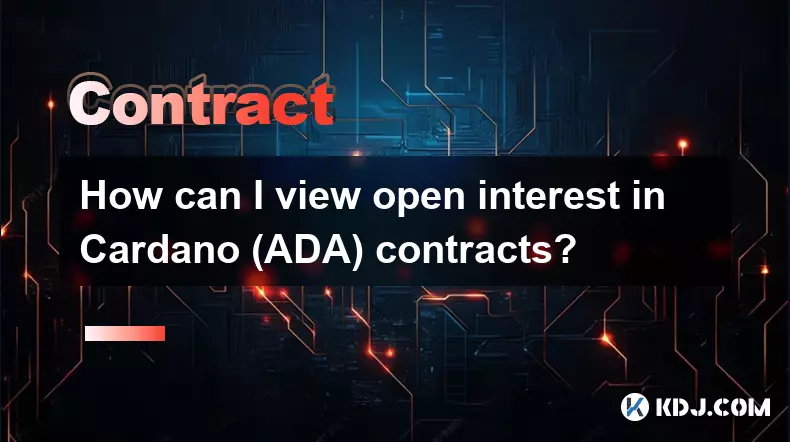
How can I view open interest in Cardano (ADA) contracts?
Sep 24,2025 at 07:36am
Understanding Open Interest in Cardano Derivatives1. Open interest refers to the total number of outstanding derivative contracts, such as futures or ...
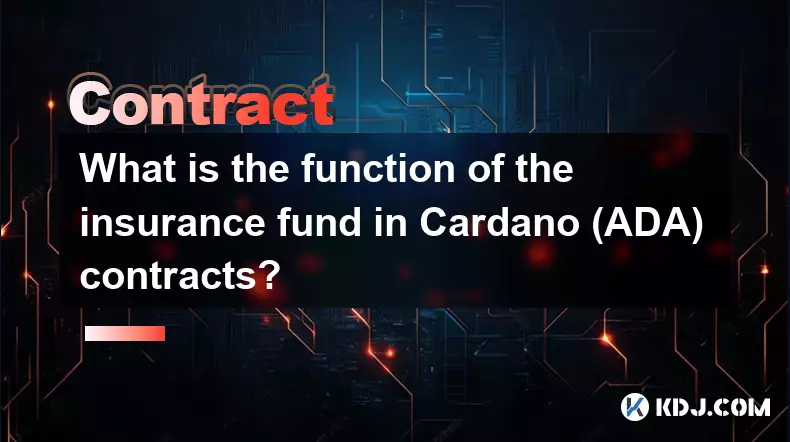
What is the function of the insurance fund in Cardano (ADA) contracts?
Sep 24,2025 at 02:18am
Understanding the Role of Insurance Funds in Cardano Smart Contracts1. The insurance fund within Cardano's ecosystem is not a native feature directly ...

How can I view historical transaction records for Cardano (ADA) contracts?
Sep 24,2025 at 04:01pm
Understanding Cardano's On-Chain Data Structure1. Cardano operates on a proof-of-stake blockchain that records all transactions in blocks secured thro...

How do I enable the "scalping-only" mode for Cardano (ADA) contracts?
Sep 24,2025 at 03:19am
Understanding Scalping Strategies in Crypto Derivatives1. Scalping in cryptocurrency trading refers to executing multiple short-term trades within min...

What is the maximum position limit for Cardano (ADA) contracts?
Sep 23,2025 at 11:00pm
Understanding ADA Futures and Derivatives Market Structure1. Cardano (ADA) futures contracts are offered by several major cryptocurrency derivatives e...

What is the maker fee for Cardano (ADA) contracts?
Sep 26,2025 at 09:01am
Understanding Maker Fees in Cardano (ADA) Contracts1. The concept of maker fees applies broadly across decentralized exchanges and smart contract plat...

How can I view open interest in Cardano (ADA) contracts?
Sep 24,2025 at 07:36am
Understanding Open Interest in Cardano Derivatives1. Open interest refers to the total number of outstanding derivative contracts, such as futures or ...

What is the function of the insurance fund in Cardano (ADA) contracts?
Sep 24,2025 at 02:18am
Understanding the Role of Insurance Funds in Cardano Smart Contracts1. The insurance fund within Cardano's ecosystem is not a native feature directly ...

How can I view historical transaction records for Cardano (ADA) contracts?
Sep 24,2025 at 04:01pm
Understanding Cardano's On-Chain Data Structure1. Cardano operates on a proof-of-stake blockchain that records all transactions in blocks secured thro...
See all articles
























